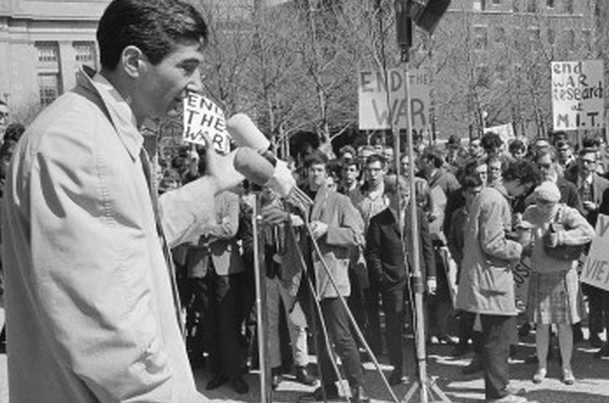
Debunking Howard Zinn: Exposing the Fake History That Turned a Generation Against America, Mary Grabar; Regnery History, 2019, 327 pages
In order to understand Mary Grabar’s withering critique of Howard Zinn’s hugely popular but ridiculously inaccurate A People’s History of the United States, it will be helpful to take a step back and ask ourselves just what we expect out of a high school history book—a good history book, I mean: a book we would trust our children to read without being exposed to all sorts of errors, nonsense, and lies. We expect history books to be truthful, of course, above all else. By this I mean: the good, the bad, and the ugly, all laid out in an easy to read, meticulously researched volume, with beefy references and copious footnotes, and featuring frank discussions where appropriate of any uncertainties and conflicts in the original sources. But what else?
“[F]or Grabar, this is war: war for the minds of our children, and for the future of our country. Like a momma bear enraged she will show no mercy.”
More to the point: Do we actually object if an author is upfront about his biases and interpretations? No. We ask only that they be highlighted, so that the uncontested facts under examination stand on their own two feet, neither aided by an authorial crutch nor mutilated by an authorial meat axe. We can afford to be tolerant of bias because, as adults, we can always chew the cud, so to speak: consciously spit out what we don’t want to swallow and consume the rest, as it were, responsibly.
The main concern with high-school-aged children, however, is that it takes time even for adults to develop a refined filter, particularly for the unconscious bias that often creeps into the most carefully written historical texts, to say nothing of subpar scholarship. Many teens haven’t had enough experience formulating fact-based opinions to discern the point at which a historian’s biases subtly become their own. Which is why presenting them “primary history” that reads more like muckraking alternate historical fiction is so deleterious to their education—unless it is taught as a case study in how not to present history. Ah, there’s a project worthy of a principled scholar’s time.
And happily, this is what Grabar’s book is, at bottom: a methodical revaluation of Zinn’s avoidance of real history and its methods for easy fiction in the service of a political agenda and its propagandistic exigencies. If things are so bad that Zinn’s A People’s History is now required reading for young learners, then, if only for the sake of didactic balance, Grabar’s critique should be as well.
After all, Zinn’s bias, indeed his entire worldview, oozes like hot, sulfur-wafting tar off every page, reframing (or selectively ignoring) historical events in service to his ideology, even if that means playing fast and loose with the facts to support an openly socialist narrative. This Grabar shows ably, even though her efforts here are marked by some error and overstatement. Early on in the book she writes:
According to Zinn, there’s no such thing as objective history…. “the historian’s distortion is more than technical, it is ideological; it is released into a world of contending interests, where any chosen emphasis supports (whether the historian means to or not) some kind of interest, whether economic or political or racial or national or sexual.” Once ideology has become a moral virtue, Zinn can discount standards of scholarship—such as those of the American Historical Association—as having to do with nothing more than “technical problems of excellence”—standards of no importance compared to his kind of history, which consists in forging “tools for contending social classes, races, nations.”
That’s the gist of Grabar’s complaint. The problem is that no one who, like Zinn, accepts Marx’s “dialectical materialism” would altogether disavow “objective history,” since the very intelligibility of the former concept presupposes the latter. Besides, observing that a historian’s writing, quite independent of his intentions, may be used to advance any number of “contending interests,” is perfectly compatible with the view that there is such a thing as “objective history.” Whatever may have been Zinn’s beliefs and intentions, Grabar does not establish that, for him, “ideology” is “a moral virtue,” nor that, to his mind, “standards of scholarship” are “of no importance compared to his kind of history.” What she does show at all events is that “objective history” and “standards of scholarship” were clearly not part of his motivation in writing A People’s History.
Nor is such neglect trivial, Zinn’s shoddy scholarship having become ubiquitous in secondary education and renowned in our culture. So pervasive is its cultural influence, Grabar notes, that on April 9, 2019, A People’s History was used as a substitute for the Bible itself at the swearing in of Oklahoma City’s new city council member, JoBeth Hamon. Plainly, then, a reassessment of Zinn’s many fictions is an urgent matter for serious educators to address. Ours may be no country for old men, Grabar concedes, but it isn’t Mordor, either. And because Zinn paints a unidimensional picture of the rise of the evil capitalist United States, A People’s History is no book for teens—least of all if it is required as their first authoritative history of the American republic. This is the message Grabar wants the reader to take away from her systematic deconstruction of Zinn and his twisted myths about America.
So, when she says in “A Note from the Author” that “[t]he task I undertake in this book is to expose Zinn’s lies,” the woman means it with the resolve of a warrior set out to retake a hill captured by the enemy. Nor does it take long for the reader to realize she means that all of A People’s History is, basically, a pack of lies—as dishonest and overrated as the man who wrote it. Again, for Grabar, this is war: war for the minds of our children, and for the future of our country. Like a momma bear enraged she will show no mercy.
Zinn’s work is thus drawn and quartered from start to finish with laser-like attention to detail. Still, Debunking Howard Zinn feels a bit meandering, bouncing from historic episodes in his books to his biography and back again. But what emerges from patience with the informal layout of the topics is a clear pattern on Zinn’s part of intentional emphasis, errors, and omissions—relentless emphasis of the negative, avoidable errors about basic facts, and stubborn omission of any mitigating positives. Whether the subject is America’s oppression of the native Americans and African slaves, or its suppression of socialist and communist political movements from World War Two up to and including the Vietnam War, Zinn always presents America the Hideous, the Unjust, the Racist, as if there were nothing else to the story.
The examples are too numerous and detailed to do them justice in this space. Suffice it to say, Grabar’s is a tour de force of deconstructing a text in accessible layman’s terms, well worth a careful read. One may, however, take issue with some aspects of her presentation. Regarding World War Two, for example, Grabar’s criticism of Zinn’s account as “pacifist fantasy riddled with conspiracy theories” seems to me aimed at more than Zinn. She is quite correct that the then-robust anti-interventionist movement was strangely “not even given a mention in Zinn’s book,” and that he lamely interprets internal deliberations within the American government about justifying entry into the war prior to Pearl Harbor as proof of positive intent to enter it. And yet, Grabar’s own reliance on interventionist historians such as Larry Schweikart and Michael Allen to characterize the suspicion that “Roosevelt provoked Japan” as “absurd,” dismisses real controversy about just how inexplicably vulnerable and curiously tempting a target Pearl Harbor was on the day it was attacked.
Although Grabar does establish by the end of the book that Zinn’s method was not thoughtful policy critique of Roosevelt or any particular president, but rather one which served “to indict all American presidents…and [to] pretend they’re all the same because all of them, regardless of party or individual character, are irredeemable, greedy, capitalist war-mongers,” it seems clear that Zinn’s overbroad accusations feed Grabar’s own, providing convenient strawmen, in this case to avoid legitimate reflection on just how and why America always seems to find herself drawn into foreign wars.
It is interesting, though hardly surprising, that at Amazon.com the crowdsource reviews of Grabar’s book are rather polarized. With unusually few exceptions, as of this writing they are either four or five stars (12% + 73% = 85%) or one star (9%), depending entirely on one’s opinion of Zinn’s writing, it seems. Clearly, most reviewers aren’t Zinn fans. The most common complaint among those who think Grabar has done Zinn wrong is that her attacks are partisan. There is one line of critique of Grabar’s work that merits especial consideration, namely, the argument made by “Prof. JayG” that Grabar’s citations are confusing and inconsistent to the point of being sloppy in their application. The specific example this reviewer gives is that, though Grabar accuses Zinn of lifting others’ work, she doesn’t document her accusation: hers is just a wild, unsupported claim, the reviewer contends. An example of this subject as early as page 5 comes to mind:
But there is no evidence that Zinn ever actually made extensive notes in preparation for writing A People’s History. On the contrary, there is telling proof that he did no such thing. It’s unlikely that he even read as much of “Columbus’s journals” or the works of “Las Casas, the great eyewitness” as he claimed. The truth is that Zinn’s description of Columbus’s first encounter with the American Indians is lifted from Columbus: His Enterprise: Exploding the Myth, a book for high school students that Zinn’s friend and fellow anti-Vietnam War activist, Hans Koning, first published in 1976. In other words, though one of Zinn’s radical America-hating colleagues did the initial work of smearing Columbus, Zinn got the credit.
If that is all the reviewer, ostensibly a professor, read before he gave up, then I might understand his criticism. There are no footnotes or endnotes in that passage, after all. However, the next several pages go almost page by page through Koning’s book and constitute Grabar’s compelling evidence that Zinn didn’t merely plagiarize Koning’s work; he even went so far as to omit Koning’s arguably more balanced presentation. As for footnotes and citations—the reviewer’s “main concern” with Grabar’s scholarship—Grabar writes that
Koning’s slim volume does not cite any sources. Koning was not a Columbus scholar any more than Zinn was. In fact, he was not even a historian, while Zinn was at least a college professor. But what the two men shared was an interesting history in politics. Koning had been a member of the Dutch Resistance under his original name, Hans Koningsberger, which he changed in 1970. He was a Socialist and a founder, along with Noam Chomsky and Zinn, of the anti-Vietnam War Resist organization. Koning’s 2007 obituary in the Guardian described him as a novelist, a playwright, and a journalist who had traveled to Russia and China in the 1960’s. 23
The “23” superscript marks the twenty-third citation in Grabar’s book at the top of page 8, where this passage is found. So, while it’s true that hers is a distinctly layman’s format, intended for non-historians and maybe even partisan readers as well as the “learned,” the accusation that Grabar didn’t do her own due diligence and was sloppy—making wild claims without citing sources—doesn’t hold up to even a cursory review of the book’s opening pages. In this case, the argument is not left to a mere footnote, and Grabar spends the requisite time fleshing it out directly from the source. Grabar’s indictment of Zinn’s scholarly sloppiness goes on like this for 300-plus pages, leaving no doubt that the man’s work is beneath the basic standards of historical research and scholarly presentation. Her catalog of his infidelities to the historian’s basic job is damning and definitive.
True, it is a fair counterpoint to say, based on this internal evidence she presents, that all Zinn intended to write in A People’s History was a tract very much like Koning’s, albeit longer. But for all that, the book did take on the mantle of a history book proper, so Grabar is right to insist that reliance on sources like Koning’s needed to be made explicit; and wherever necessary, its asserted facts independently verified. This of course Zinn did not do. Why, therefore, this book is promoted as primary history by the education establishment is a serious question that requires an answer.
To be sure, Grabar’s scathing revaluation of Zinn’s work is not without its own bias and agenda. The author may rightly be accused of doing to Zinn what his history has done to America: painting an unforgiving portrait with no mitigating material to balance the bleak judgements rendered. After all, as a critic of America’s many unnecessary wars, Zinn has some significant affinities with the anti-interventionist right—a fact that goes unexplored by Grabar, who seems content to turn him into a bit of a scarecrow for any criticism of American interventionism.
Still, all in all, Graber’s polemic is frank about its intent, systematic in its method, and it hits its mark. For those who have watched with some concern, if not horror, at how the organs of modern education at every level have spoon-fed students an unbalanced and altogether negative view of America (one that seems to have fueled the ominously rising popularity of socialism among millennials), Debunking Howard Zinn provides solid evidence that Zinn’s “history” played a central role in facilitating this trend.
More usefully, perhaps, the book can also be seen as a blueprint for how to begin to challenge the education establishment, by means of facts and disciplined reading of what our children are being taught. It is, of course, our responsibility as parents to get and stay involved in our children’s education, no matter how hard the education system is making that today. That the situation has gotten so out of hand as to allow slipshod work like Zinn’s to frame how our children understand our national history perhaps makes us complicit in this travesty. Maybe it’s time we get off our duffs and do something about it?

